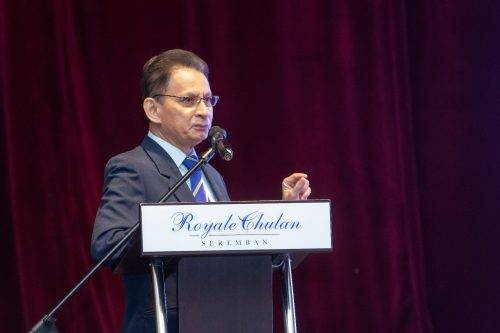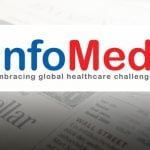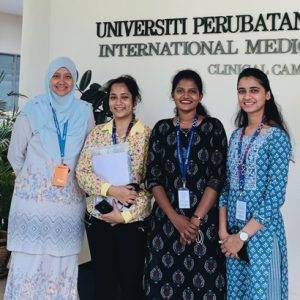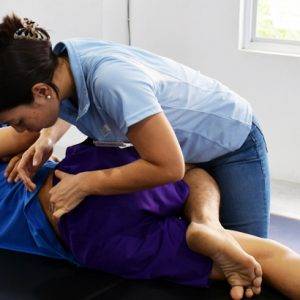The Institute for Research, Development and Innovation (IRDI) of the International Medical University (IMU) together with Ministry of Health (MoH) Malaysia have successfully organised the Precision Medicine in Diabetes Symposium at the Royale Chulan Seremban Hotel on 8 July 2023.
In conjunction with the symposium, the Seremban Diabetes (SeDia) Cohort Study was also officially launched by Duli Yang Maha Mulia Tuanku Muhriz Ibni Almarhum Tuanku Munawir, Yang Di-Pertuan Besar Negeri Sembilan.
It was a whole day event, starting from 8:30 am and ended at 6:00 pm. The symposium was organised in a hybrid mode and has attracted a total of 130 participants from MoH Malaysia, National Institutes of Health (NIH), Institute for Medical Research (IMR), District Health Offices, Seremban Health Clinic, as well as public and private universities in Malaysia.
The keynote speakers of this symposium included:
Prof Dato’ Dr Mafauzy Mohamed
Professor of Medicine and Senior Consultant Endocrinologist in Hospital Universiti Sains Malaysia (HUSM) and Board of Governors in IMU
Prof Datuk Dr Lokman Hakim Sulaiman
Deputy Vice-Chancellor of Research and principal investigator of SeDia cohort, and Professor of Public Health in IMU
Prof Datuk Dr A Rahman A Jamal
Head of Strategy and Senior Principal Research Fellow in Universiti Kebangsaan Malaysia (UKM)
Prof Dr Edward Gregg
Chair of Diabetes and Cardiovascular Diseases at the Imperial College London, United Kingdom
Datuk Dr Zanariah Hussein
Consultant Endocrinologist and Physician at Hospital Putrajaya
Prof Dr Michael Lean
Professor of Human Nutrition at the University of Glasgow, United Kingdom
The symposium kickstarted with two industry talks by Dr Anthony Lawrence who is the Chief Executive Officer of BioMark, Singapore followed by Prof Dr Benny Chung Ying Zee who is Director of Centre for Clinical Research and Biostatistics as well as Prof of Jockey Club School of Public Health and Primary Care at the Chinese University of Hong Kong.
Dr Anthony shared an interesting mobile application which serves as a vital nexus connecting the diabetes patients, physicians and nurses. It allows the sharing and syncing of data and results between the physicians and patients in a fast and convenient manner. The application is known to be cost-effective with increased rates of follow-up and higher adherence to medications and treatments among the patients.
Subsequently, Prof Benny enlightened the crowd on a machine learning based retinal imaging technology which helps in the diagnosis of undetected diabetes, and estimation and assessment of risks of chronic diseases such as diabetes neuropathy, stroke, cardiovascular heart disease, and chronic kidney disease which ultimately serves as an effective health promotion tool.

The burden and challenges of diabetes were subsequently highlighted by Prof Mafauzy. Diabetes is a chronic non-communicable disease constituting a major health issue. In 2021, an estimated 537 million people worldwide are living with diabetes which has reached an alarming level. This number is projected to increase by 46% to 783 million by 2045 if nothing is done.
In Malaysia, it was estimated that one in five adults or about 3.9 million people are affected by diabetes, making one of the highest diabetes rates globally and giving Malaysia the title of “Sweetest Nation in Asia”.
Among the affected
49% (3.7 million) cases were undiagnosed, or simply put, they were unaware that they were having diabetes.
Among the Malaysian diabetes patients, almost 80% seek treatment at MoH healthcare facilities, with the majority of patients seen at MoH health clinics.
It was reported in 2017
Annual direct healthcare costs from diabetes in Malaysia totalled about RM4.4 billion, 227 per cent higher than cancer (RM1.3 billion) and 11 per cent higher than cardiovascular disease (RM3.9 billion).
This will indeed become a great burden to MoH Malaysia. This problem has been compounded with the fact that diabetes is a disease entailed with many serious complications requiring a high cost of managing these disease complications. This really deserves attention and actions from all parties before the Malaysian healthcare system collapses.
Application of Precision Medicine
Nevertheless, the good news as shared by Prof Dato Rahman Jamal is, precision medicine could take place whereby big data is harnessed from the diabetes patients and healthcare is delivered to a patient based on the person’s unique genetic make-up, environment factors, and lifestyle habits. This SeDia cohort study will be able to gather vital information from the diabetes patients and their family members which will help tremendously in the design of personalised diabetes approach. By doing so, the individuals will be placed into appropriate treatment groups based on the collected data. Having this personalised approach systematically done will certainly help in reducing the costs of treating and managing diabetes in this country.
Some people with type 2 diabetes can become non-diabetic again, at least for a period. That is called a remission of diabetes. A remission of diabetes will allow the patient to stop taking anti-diabetic drugs. Another good news shared by Prof Michael Lean is that remission of diabetes is possible. This has been conducted under testing by the Diabetes Remission Clinical Trial (DiRECT), a non-surgical Counterweight-Plus programme. DiRECT is funded by the Diabetes UK and being run in Primary Care where obesity and type 2 diabetes are routinely managed via total meal replacement.
The study suggests that weight loss of more than 15 kg in the patients should be sufficient to reverse type 2 diabetes by removing ectopic fat in liver and pancreas, restoring first-phase insulin secretion, and returning of pancreas to the normal morphology. Besides, other features of metabolic syndrome have also reportedly improved. This study truly offers a glimpse of hope to the type 2 diabetes patients by being a viable treatment to achieve diabetes remission.
Datuk Dr Zanariah deliberated on the different yet interrelated roles played by each of the members in a diabetes multidisciplinary team (MDT). Diabetes involves a complex interplay of multiple factors. Thus, it is crucial to form a diabetes MDT consisting of physicians, pharmacists, nurse practitioners or diabetes nurse educators, ophthalmologists, podiatrists, mental health professionals, dietitians, and endocrinologists in order to achieve optimum management and treatment of the disease. Indeed, each of the allied health professionals has their own vital role to play.
Closing Remarks by Tan Sri Dato’ Dr Abu Bakar Suleiman
The symposium concluded with a closing remark by Tan Sri Dato’ Dr Abu Bakar Suleiman who advocated that the SeDia Cohort Study be geared towards adopting the 4P (Predictive, Preventive, Personalised, Participatory) medicine approach. 4P medicine is an approach incorporating systems biology and systems medicine which have increased the ability to decipher the biological complexity of diseases and provide doctors, patients as well as consumers with personalised information on an individual’s health at molecular, cellular and organ levels. It also adopts digital revolution with radically enhanced capabilities for collecting, integrating, storing, analysing and communicating data and information, including medical histories, clinical tests and results of the tools of systems medicine.
On top of that, 4P medicine is also moving towards consumer-driven healthcare and social networks with consumers having access to information and empowered to manage their own health. Lastly, Tan Sri also mentioned that SeDia Cohort Study should move towards patient-centred, personalised medicine, and from the present reactive to future proactive medicine with the focus on wellness.
Diabetes, being a disease overloaded with sweetness, is not a condition that one will fancy. It will lead to many complications which will adversely affect the quality of life amongst those affected. However, these complications can actually be prevented with early detection. With timely detection, it is anticipated that the affected individuals could change their lifestyles and reverse the situation.
Recruting Participants for SeDia Cohort
Aside from all these speeches, the SeDia booth was setup throughout the day to deliberate all enquiries about SeDia cohort to potential participants. It featured the “Prevent & Manage Diabetes: Live a Healthier Life” exhibition, which was specifically designed for invited guests, including diabetic patients from Klinik Kesihatan Seremban (KKS). The objective of this exhibition were to enhance public awareness regarding the prevention of diabetes-related complications and to inform on the incidence, prevalence, risk factors, potential genetic and environmental influence of T2DM particularly to diabetic patients and their family members.
A/Prof Dr Verna (Family Medicine Department, IMU), research assistants and trained volunteers introduced the SeDia project and explained the research protocol and potential outcomes/benefits to the patients and family members, recorded patient contacts, and also distributed patient information sheets.
Approximately 67 public guests visited the booth and out of these, 20 potential diabetic patients had managed to successfully register for the SeDia Cohort. Furthermore, there were exhibitors and sponsors who offered complimentary health screenings for eye and foot care, health promotion programme, integrated personalised primary care, nutritional and dietary guidance with distribution of some product leaflets and goodies.
References
International Diabetes Federation. IDF Diabetes Atlas 2021. 10th edition. Available on https://diabetesatlas.org/atlas/tenth-edition/
Ministry of Health Malaysia. National Health & Morbidity Survey 2019: Non-Communicable Diseases, Healthcare Demand and Healthcare Literacy. Available on http://iptk.moh.gov.my/images/technical_report/2020/4_Infographic_Booklet_NHMS_2019_-_English.pdf.
Ministry of Health. National Health and Morbidity Survey 2015 (NHMS 2015). Volume II: Non-Communicable Diseases, Risk Factors & Other Health Problems. Bengaluru, India: Institute for Public Health; 2015.
Alifah Z, Boo SL. Code Blue: Diabetes Spending More Than Triples Cancer In Malaysia. 10 August 2022. Available on https://codeblue.galencentre.org/2022/08/10/diabetes-spending-more-than-triples-cancer-in-malaysia/#:~:text=KUALA%20LUMPUR%2C%20August%2010%20%E2%80%93%20A,9%20billion)
Leslie WS, Ford I, Sattar N, Hollingsworth KG, Adamson A, Sniehotta FF, McCombie L, Brosnahan N, Ross H, Mathers JC, Peters C, Thom G, Barnes A, Kean S, McIlvenna Y, Rodrigues A, Rehackova L, Zhyzhneuskaya S, Taylor R, Lean ME. The Diabetes Remission Clinical Trial (DiRECT): protocol for a cluster randomised trial. BMC Fam Pract. 2016 Feb 16;17:20. doi: 10.1186/s12875-016-0406-2. PMID: 26879684; PMCID: PMC4754868.
Related article: Launch of MOH-IMU Seremban Diabetes (SeDia) Cohort Study




 Yang Berhormat Minister of Health, Dr Zaliha Mustafa, speaking at the launch of the Seremban Diabetes (SeDia) Cohort Study
Yang Berhormat Minister of Health, Dr Zaliha Mustafa, speaking at the launch of the Seremban Diabetes (SeDia) Cohort Study 



